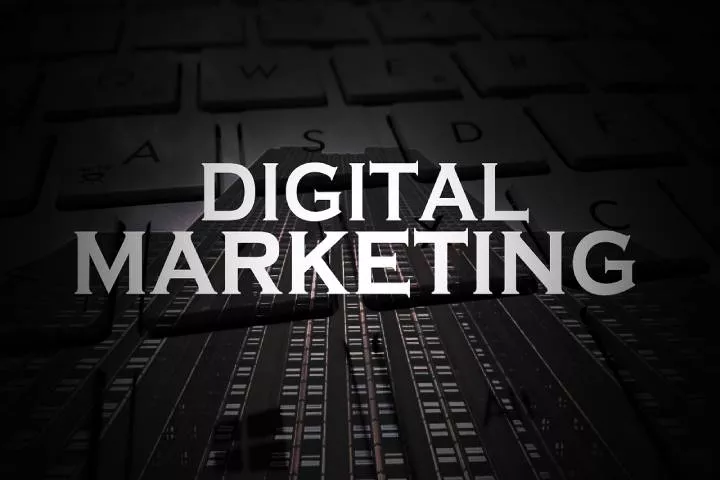Business
Workflow Management Tips to Manage Your Workflow Successfully
In fact, by following these five workflow management tips, you’re already well on your way to a more successful workflow experience. Ready to try it yourself? Then get going!

If you work in a business environment, the chances are good that you have had some amount of instruction on proper workflow management. But there’s more to understanding it than just completing a brief associated training course and moving on.
Proper mastering the concept requires more thought and planning. It’s important to take advantage of every opportunity to predict problems before they become issues, setting yourself up for success through diligent preparation.
The aim is to avoid conflicts arising by clearly defining each step in advance while adopting new technologies to meet your specifications on any given project or assignment with greater efficiency.
Doing this successfully takes practice, but once you get into the habit of carefully charting out procedures, outreach strategies, expected outcomes, and metrics – everything associated with all of your projects – the rewards are immense.
Workflow management helps you to do precisely that by providing a clear record of how tasks get completed and what specific jobs need to be handled when. This information is valuable for any business or company, so it’s crucial to take advantage of these five workflow management tips to ensure good practice in every area associated with your job duties.
Table of Contents
1. What is a Workflow?
The term “workflow” refers to the defined process through which work advances from one phase or task into another.
Think about how you fill out an order form at a store. You collect the items on your shopping list and head to the cashier, who finds each item and inputs them into the computer. Once the items are paid for, they are placed inside a bag, and you exit through the front door.
It’s easy to see how each step in this process is integral to the smooth advancement of the customer’s order from beginning to end. Whether you work as a cashier, a store manager, or an executive assistant, the same applies.
A workflow ties together all tasks required to complete any given project or accomplish specific goals. It can be as easy as making a cup of coffee or as complex as resolving an international conflict with military intervention – understanding your role within that flow is crucial because it dictates what you will need to do next.
When you take inventory of how resources interact with one another, including people and supplies, at different time increments and use that information to plan future actions through a process of elimination, you can safely say that you are dealing with workflow management.
2. What is Workflow Management?
“Workflow management” refers to the technology and tools used for optimal resource allocation while developing and implementing a straightforward, documented project or assignment.
It involves creating an organized system that can be completed efficiently and communicated successfully to other workers while following all required procedures set out in advance.

This permits everyone involved to stay on track from start to finish without worrying about making mistakes along the way, which saves time and money because it prevents reprints and refunds due to errors.
Generally speaking, workflow management entails using computer software to keep track of all tasks.
Programmers and technicians use industry-specific applications to integrate task management across all departments and teams, making it possible to do things like monitor time spent per job or project and identify areas of opportunity for improvement.
This strategy enables people at every level of an organization – from owners to your fellow workers – to work more closely together with the same set of information in mind, which helps them make more intelligent decisions that ultimately benefit everyone involved.
Workflow management leverages technology such as barcode scanners, interactive voice response (IVR) systems, and electronic data interchange (EDI), which informs business owners about the performance of their operations in real-time to adjust production levels accordingly and remain competitively ahead of the curve.
3. The Five Workflow Management Tips You Need
Tip 1: Document Everything
One of the most significant pitfalls companies run into with their software systems is assuming they know all of the rules and intricacies needed for running effective workflows for any given product. However, as soon as you make that assumption, you take the risk of overlooking something critical to the workflow’s success.
The solution? Document everything. Be sure to include necessary context and step-by-step instructions for each task involved in your workflows. The more detail, the better – “document everything” may seem like an obvious tip, but it’s surprising how many companies don’t follow it.
Tip 2: Consider Relationships
One of the biggest mistakes companies can make with their software systems is failing to consider relationships between people, information, and other business processes (such as data). It’s all too straightforward to miss a critical connection that prevents a specific task from being completed correctly or on time.
The solution? Ensure that every field in every form has the necessary relationships to other data. That’s why one of our workflow management tips is “consider relationships” – you never know when things will change, so it’s essential to be prepared for anything.
Tip 3: Audit and Adjust Regularly
It can be difficult enough to keep up with your workflows day after day, week after week, year after year. Trying to keep track of how they’ve changed over time is even more challenging. As changes happen (and always do), it becomes easy to end up with broken processes that need fixing now – not next month or next quarter.
The solution? Be sure to regularly audit your workflows (every few months should be good). And if something doesn’t seem to make sense, fix it. Don’t ignore changes for the sake of convenience; otherwise, you risk losing valuable data, which will lead to even more problems down the road.
Tip 4: Optimize
When all is said and done (and your workflows are optimized as best as possible), don’t leave well enough alone. Just because a workflow system is working doesn’t mean it can’t work better. The chances are good that if your current system isn’t broken now, it will be soon – especially when new employees join or processes change.
The solution? Keep tweaking your workflow management process until every last task has been automated and every opportunity for improvement has been exhausted. There’s always room for – even in a well-tuned workflow system – so never stop looking for ways to improve. A dedicated workflow management software like Aproove WM can make this process easier for you.
Tip 5: Repeat
One of the biggest mistakes you can make with your software systems is assuming your workflows will never change and that they’ll remain effective forever.
Fortunately, when you follow our five workflow management tips above, it’s easy to see why this mistake doesn’t have a chance in hell of happening: Not only do your workflows need auditing and regularly adjusting (see Tips 3 and 4), but there’s no such thing as a perfect workflow process.
The solution? Be prepared for change by following Tip 5: “Repeat.” If you expect to be able to repeat these steps over and over again – at least every year or sooner if needed – then you’ll be ready for whatever new problems or opportunities come your way.
In fact, by following these five workflow management tips, you’re already well on your way to a more successful workflow experience. Ready to try it yourself? Then get going!
Business
Navigating the Process of Selling Deceased Estate Shares
This article aims to provide a comprehensive guide to selling shares from a deceased estate. Process of Selling Deceased Estate Shares.

Table of Contents
1. Understanding the Basics of Selling Deceased Estate Shares
Dealing with a deceased estate can be a challenging and emotional process, especially when it comes to handling financial assets like shares. This article aims to provide a comprehensive guide to selling shares from a deceased estate.
2. What are Deceased Estate Shares?
Deceased estate shares refer to the stocks and shares that were owned by an individual who has passed away. These shares become part of the deceased’s estate and are subject to the terms of their will or estate plan.
3. The Importance of Valuing the Shares
The first step in selling deceased estate shares is to obtain a current valuation. This valuation is crucial for several reasons: it helps in distributing the estate among beneficiaries, it may be necessary for tax purposes, and it gives an idea of the market value of the shares.
4. Legal Requirements and Executor Responsibilities
The executor of the estate plays a pivotal role in the management and distribution of the deceased’s assets. This section will cover the legal responsibilities and steps the executor needs to take to lawfully sell the shares.
5. Obtaining Probate
Before any action can be taken with the shares, it’s often necessary to obtain probate. Probate is a legal process that confirms the executor’s authority to deal with the deceased’s assets.
Transferring Shares into the Executor’s Name
Once probate is granted, shares may need to be transferred into the name of the executor. This process varies depending on the company and the type of shares.
6. The Process of Selling Shares
After completing legal formalities, the executor can proceed with selling the shares. This section will outline the steps involved in this process, including choosing a brokerage or financial service, understanding market conditions, and making informed decisions.
Deciding on the Right Time to Sell
Timing can significantly impact the returns from selling shares. Executors need to consider market conditions and financial advice to determine the best time to sell.
Completing the Sale
This subsection will detail the actual process of selling shares, including placing orders, handling transaction fees, and ensuring all regulatory requirements are met.

7. Navigating Tax Implications and Reporting
Managing tax obligations is a critical aspect of selling deceased estate shares. This section will explain the potential tax implications and the importance of accurate reporting for both capital gains tax and inheritance tax considerations.
Understanding Capital Gains Tax Responsibilities
When shares are sold, any profit made from the time of the deceased’s passing to the sale date may be subject to capital gains tax. Executors need to be aware of these implications and plan accordingly.
Inheritance Tax Considerations
In some jurisdictions, the value of the deceased estate’s shares might impact inheritance tax calculations. It’s essential for executors to understand these aspects in order to ensure compliance with tax laws.
8. Common Challenges and How to Overcome Them
Selling deceased estate shares can present unique challenges. This section will discuss common issues such as disputed wills, fragmented information about the shares, and market volatility.
Dealing with Disputed Wills and Beneficiary Disagreements
Disputes over the will or disagreements among beneficiaries can complicate the process. Executors must handle these situations delicately and legally.
Managing Market Volatility
Shares can be subject to market fluctuations. Executors should be prepared for this volatility and may need to consult financial advisors to navigate these waters effectively.
9. Tips for Executors Handling Deceased Estate Shares
This section will provide practical advice for executors, including the importance of seeking professional advice, keeping thorough records, and communicating clearly with beneficiaries.
Seeking Professional Financial and Legal Advice
The complexity of selling shares from a deceased estate often necessitates professional advice. This can range from legal counsel to financial advisory services.
Record Keeping and Communication with Beneficiaries
Maintaining transparent and thorough records is crucial. Executors should also prioritize clear and consistent communication with all beneficiaries to avoid misunderstandings.
Conclusion
Selling shares from a deceased estate is a responsibility that requires careful attention to legal, financial, and interpersonal dynamics. By understanding the process, staying informed about tax obligations, and tackling challenges head-on, executors can fulfill their duties effectively and respectfully.

 Instagram3 years ago
Instagram3 years agoBuy IG likes and buy organic Instagram followers: where to buy them and how?

 Instagram3 years ago
Instagram3 years ago100% Genuine Instagram Followers & Likes with Guaranteed Tool

 Business5 years ago
Business5 years ago7 Must Have Digital Marketing Tools For Your Small Businesses

 Instagram4 years ago
Instagram4 years agoInstagram Followers And Likes – Online Social Media Platform





















